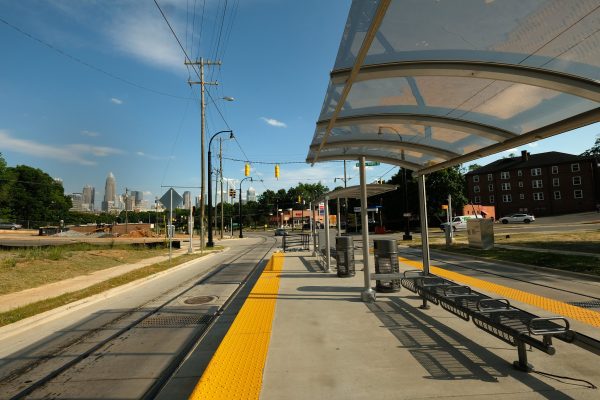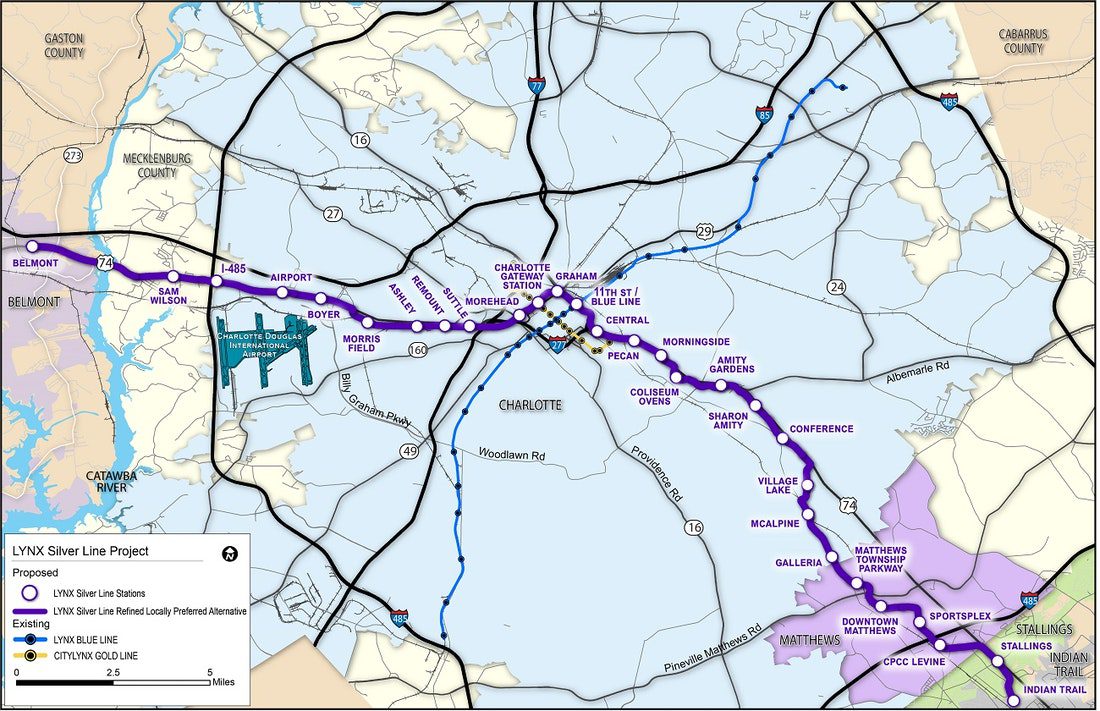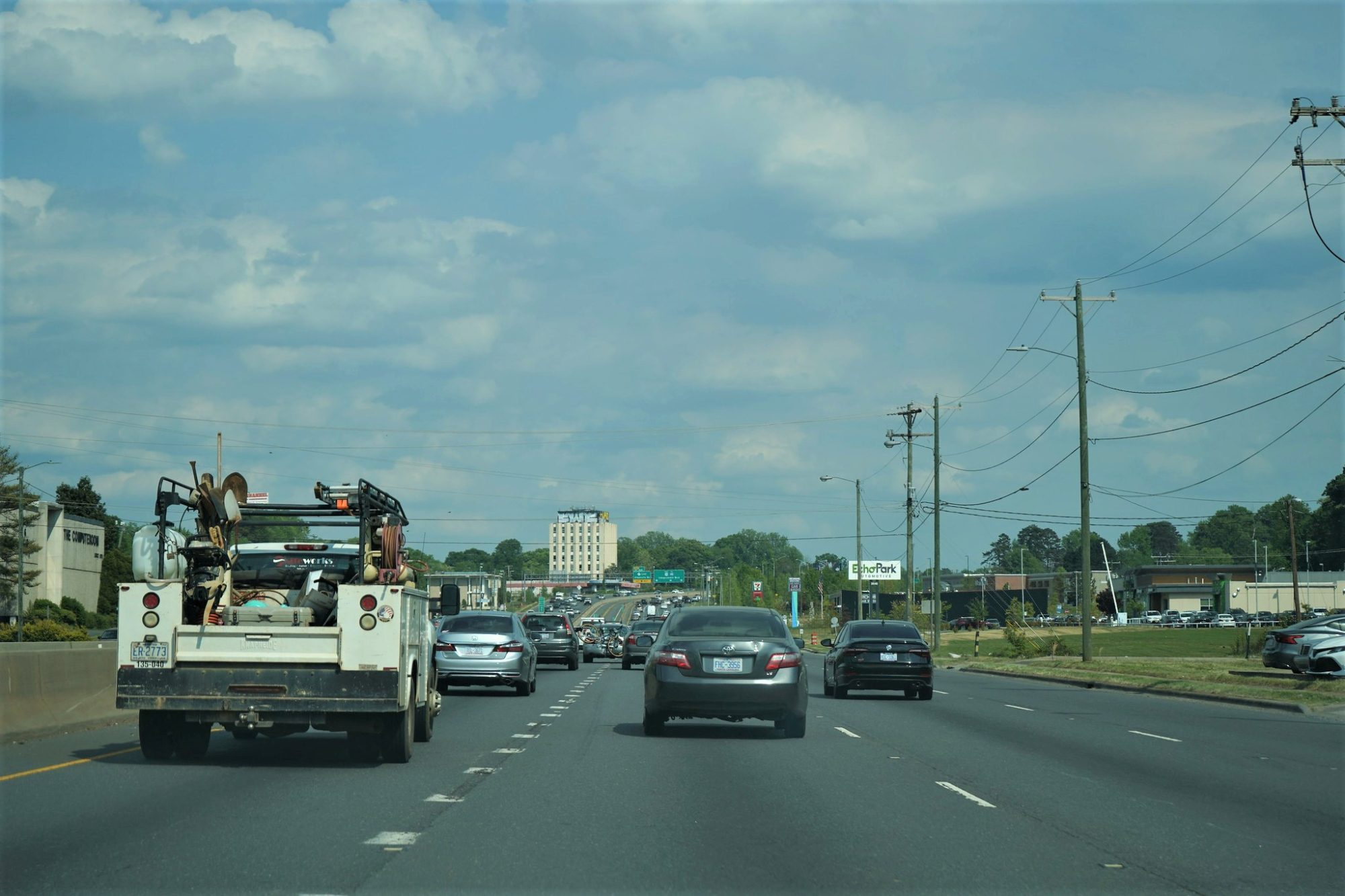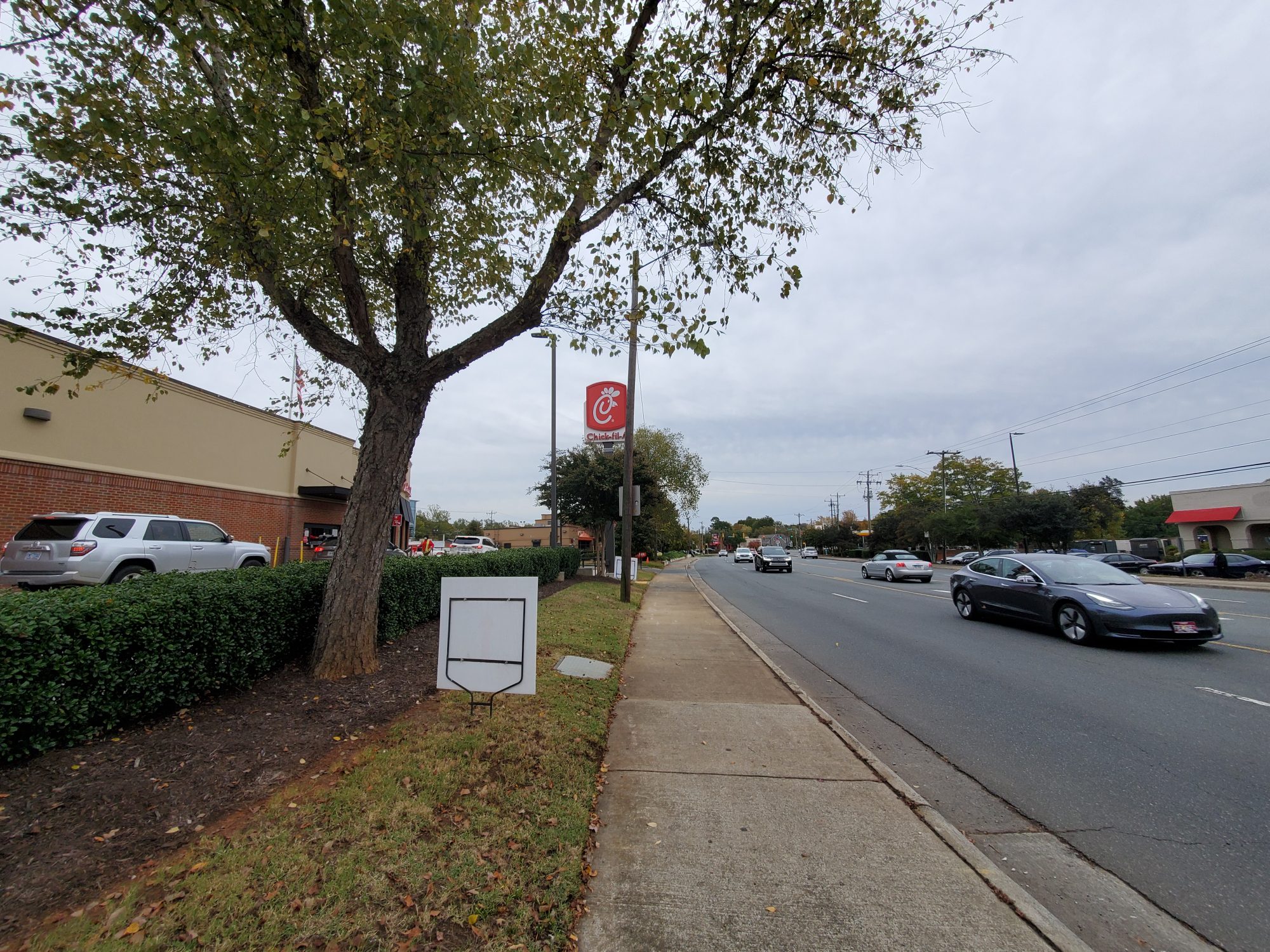A transit tax vote (maybe). Gaping budget holes. Recovering ridership? Key transit trends to watch in 2022

With 2021 fading into the blessed rearview mirror, it’s time to take a look ahead at what transit controversies, developments and questions are looming further down the track in 2022.
The past year was, once again, wracked by the pandemic and uncertainty about how — even whether — Charlotte can fund the infrastructure to move people from Point A to Point B as the city grows. But it wasn’t a year of total stasis: the Gold Line streetcar finally opened, traffic returned as Charlotte drivers ventured back out into the world and plans for new transit developments like Gateway Station and a revamped uptown transportation center for buses inched ahead.
If you’re a person who leaves the house and moves around Charlotte, here are the top five transit and transportation trends, plans, and questions to keep an eye on in 2022:
A new transit tax?
It seems hard to believe, but Charlotte is ending 2021 with more questions about the future of its transit plan than when the year opened.
A year ago, the Charlotte Moves task force had just released its recommendations for an ambitious, multi-billion dollar plan to build a new east-west Silver Line light rail stretching to Union and Gaston counties, restart the stalled Red Line commuter rail project, extend the Blue Line, and build more greenways, bicycle lanes and road improvements. Leaders were gearing up to push for a new, one-cent sales tax in Mecklenburg County to fund the whole enterprise.

Now, the plan is beset with questions. The 2021 municipal elections were delayed, meaning there was never a sales tax referendum on the ballot. Republican legislators in Raleigh — whose support is needed to even put a sales tax referendum on the ballot — have signalled their disinterest or opposition to the city’s plan. After decades of paying the current half-cent sales tax, leaders in north Mecklenburg seem uninterested in supporting another sales tax, at least while it’s clear the long-promised Red Line is still dead in the water.
And it’s not clear how Charlotte would fund light rail expansion into other counties, which aren’t necessarily on board with taxing themselves to pay for it — as a recent visit to Indian Trail showed.
“I really don’t have much comment on it until they have a really solid plan, or solid plans of action — this is how much it’s going to cost, here’s what it will be in the future, here are the positives and the negatives and every aspect of how we would fund it and maintain it,” said Indian Trail Mayor Michael Alvarez.
To top it all off, the plan’s total estimated cost increased to $13.5 billion and the timeline for completion has been pushed back past 2040.
[Throwback: In late 2020, leaders expected a transit sales tax referendum decision by January ’21]
Whether or not Charlotte will push to put a sales tax before voters in a 2022 referendum is the biggest question hanging over the whole plan now. There’s not a clear path to the ballot, and City Council is entering a delayed election year, with some members leaving and others scrambling for new seats. And the reputation City Council has during election years is that little serious policy work gets accomplished.
But without that tax, there’s no local funding for Charlotte’s plans (local funding would account for more than 60% of the total cost, with federal funds making up the rest). And without those plans, it’s back to the drawing board for Charlotte’s transit and transportation future. That would be an embarrassing setback after more than two years of planning and public discussion.
N.C.’s big, bad budget hole
Charlotte isn’t the only government facing a funding shortfall. The North Carolina Department of Transportation is nearly $12 billion short of the funding needed to build the next decade’s worth of road projects. That’s because cost estimates for the whole plan roughly doubled this year.
The state says that the massive cost increases were driven by everything from increased construction and land costs to legal settlements to a higher, and more accurate, measure of inflation used in estimates. Officials have admitted that their previous estimates were wrong, in some cases wildly so (one project, widening a one-mile stretch of Matthews Township Parkway, jumped from an estimated $4 million to $42.5 million, or a 966% increase).
[Charlotte leaders start wrestling with state transportation budget shortfall]

Independence Boulevard, one of the roads that could see construction projects delayed because of the state’s budget shortfall. Photo: Ely Portillo.
That means the state is scrambling to delay, pare back and chop costs on major projects. In Charlotte, the NCDOT owns and maintains roughly half the major thoroughfares. Local officials say they expect to hear in 2022 what the state funding shortfall will mean for Charlotte, but they’re bracing for everything from outright cancellations to years-long delays on marquee projects like toll express lanes on Independence Boulevard.
They’re also readying for the possibility that Charlotte will have to pay more out of its own pocket to fund improvements on state-owned roads, and that planned pedestrian and bicycle infrastructure will be cut to save money.
“It’s fair to say that money’s not there. We can say it should be there, but it’s not going to come,” said Mayor Pro Tem Julie Eiselt.
Will transit riders return?
With businesses shut down and people terrified of catching a new, deadly virus from others in close quarters, it was no surprise that transit ridership fell off an absolute cliff in the spring of 2020. The Charlotte Area Transit System’s total ridership immediately plunged by 67% in April of 2020, with Blue Line ridership falling 74% and local bus ridership falling 60%.
What’s perhaps more surprising is that some of those numbers are still falling. Bus ridership in particular has continued to decline, following a multiyear trend of major decreases.
In October 2021, CATS numbers show that Blue Line ridership is up 33% so far this fiscal year, as riders slowly return. Bus ridership numbers, however, are down 2.2% this fiscal year — which means fewer people are riding local buses now than they were in the fall of 2020, when few offices had reopened and vaccines weren’t available.
Bus ridership has been falling nationwide for years. But the bus system has long been the backbone of CATS’ transportation network, carrying a majority of riders despite the attention rail gets. Luring riders back — whether the system can even do it — will be a crucial test for transit’s future in Charlotte.
Will Charlotte curb traffic deaths?
Average annual traffic deaths in Charlotte have roughly doubled over the past decade, from an average of 39 in 2008-12 to 81 last year. The city is on track to match that grim total this year as well.
Again, Charlotte isn’t unique: Traffic deaths are rising nationwide, and experts aren’t really sure why. Everything from pandemic-induced recklessness like speeding and lack of seatbelts to increased texting and driving to the huge SUVs and pickups that make up the majority of vehicles on the road now has been blamed.
[Despite plans to end traffic deaths, Charlotte is headed in the wrong direction]
In Charlotte, speeding enforcement has plunged, with the number of tickets written falling rapidly over the same time. Charlotte leaders are focused on redesigning the city’s street network for greater safety (think narrower roads, fewer lanes, more bicycle lanes and technology like flashing lights at pedestrian crossings), but, at the current pace, it would take hundreds of years to rebuild the whole network of local roads.
With a crisis of traffic deaths on its hand, more short-term, immediate solutions are needed. Local leaders could choose to focus on more speeding and impaired/reckless driving enforcement (a problem detailed statewide by the Charlotte Observer in an extensive series this summer). They could also push to bring back measures like automated speed enforcement cameras and red light cameras, which the city used until the mid-2000s.
Will pedestrian, bicycle-friendly design rules survive — and be enforced?
While the actual roads, train tracks and bicycle lanes get a lot of our focus (and deservedly so), the actual development around them often matters even more. That’s a big reason why local leaders are willing to spend billions on light rail and hundreds of millions on the streetcar: For the development booms that accompany those transit lines.
But it’s not just any growth that local leaders are trying to foster. After decades of being a car-first, asphalt-heavy city of sprawl, Charlotte officials are hoping the city’s next iteration will be more friendly to walkers, bicyclists and people who don’t drive. “Ten-minute neighborhoods,” or areas where you don’t have to drive to everything but can instead walk or bike to things like stores and restaurants within 10 minutes, are a major goal of the city’s new 2040 vision plan and unified development ordinance (UDO).
The UDO contains the actual development rules and regulations that govern what gets built and what it looks like. City Council is expected to approve the new UDO in the summer of 2022. It includes rules calling for better sidewalks, and some of the new transit-oriented development zoning districts that have already been implemented forbid drive-thrus next to transit lines.
[More drive-thru drama in south Charlotte]

The Chick-fil-A on Randolph Road, next to a Bojangles, that will soon be all drive-thru only if the city allows it. Photo: Ely Portillo
But customers like drive-thrus — they’ve only grown more popular since the pandemic — and developers are pushing for more. In Cotswold (which could become a showpiece “10-minute neighborhood”), the Chick-fil-A and Bojangles on Randolph Road are asking for a zoning change to allow them to eliminate seating and go permanently drive-thru only. Near South End, a Fifth Third Bank branch is pushing for a change in zoning that would allow it to add a drive-thru to a site within the transit-oriented zone where those aren’t allowed.
Such developments might seem like small potatoes. But as the city wrestles with its development rules over the next year, whether or not those rules will be upheld or enforced will make a difference in Charlotte’s transit and transportation future. Because while the multi-billion dollar rail lines matter, cities are built parcel by parcel, one strip mall, drive-thru, bike lane, and sidewalk at a time.
This story was originally published in the Transit Time newsletter, which is produced in partnership between the Charlotte Urban Institute, the Charlotte Ledger and WFAE. Find out more and subscribe here.